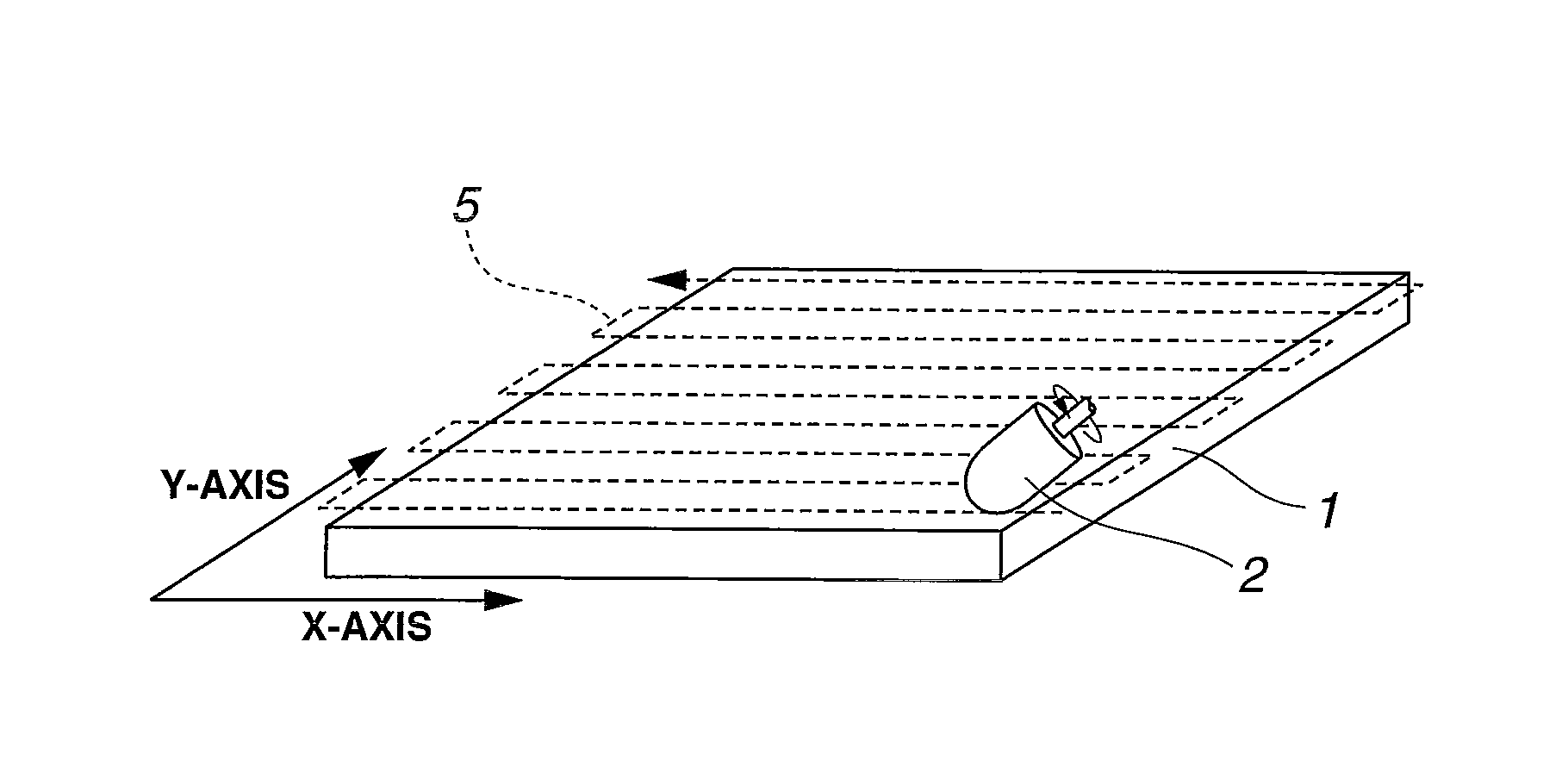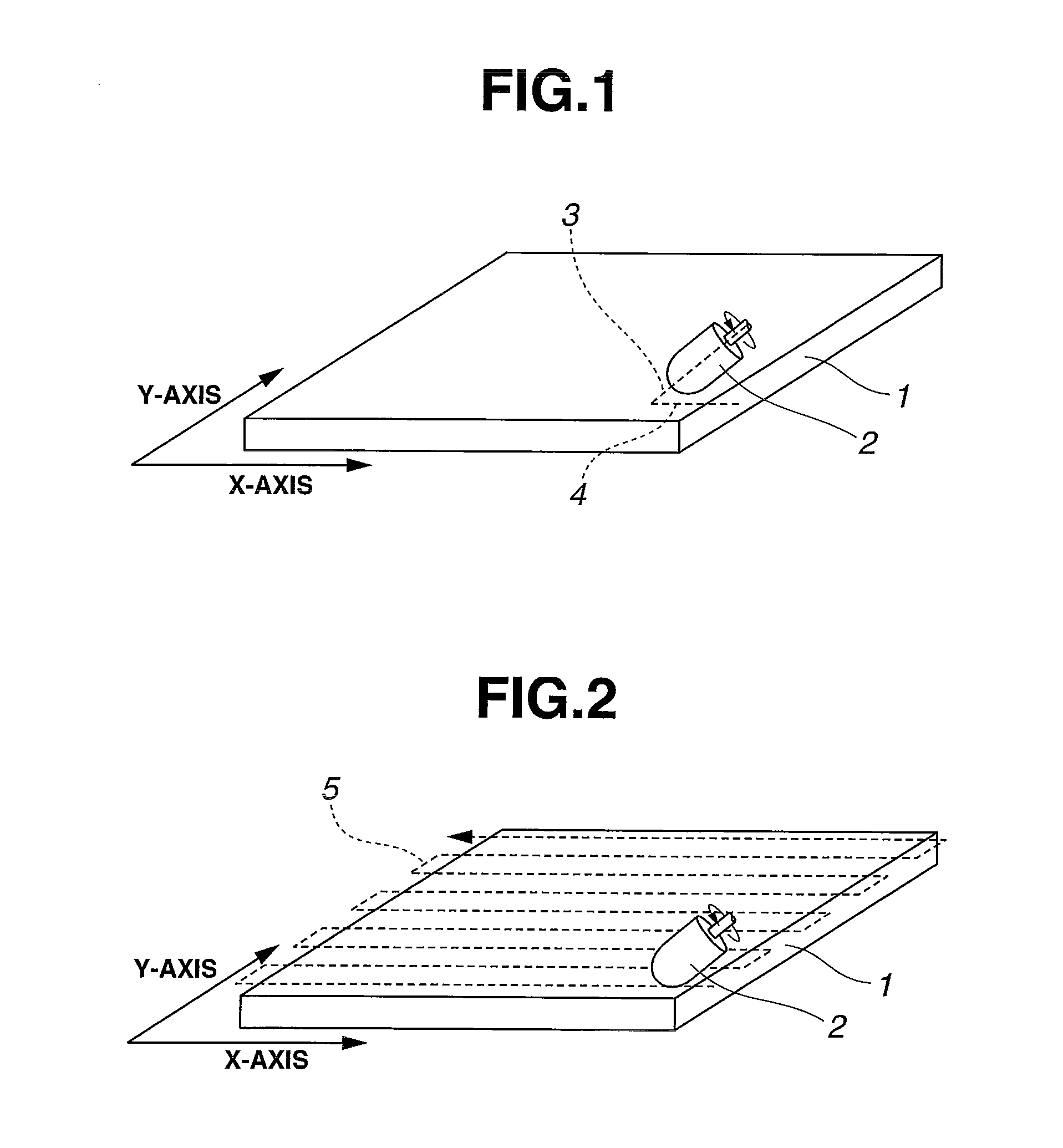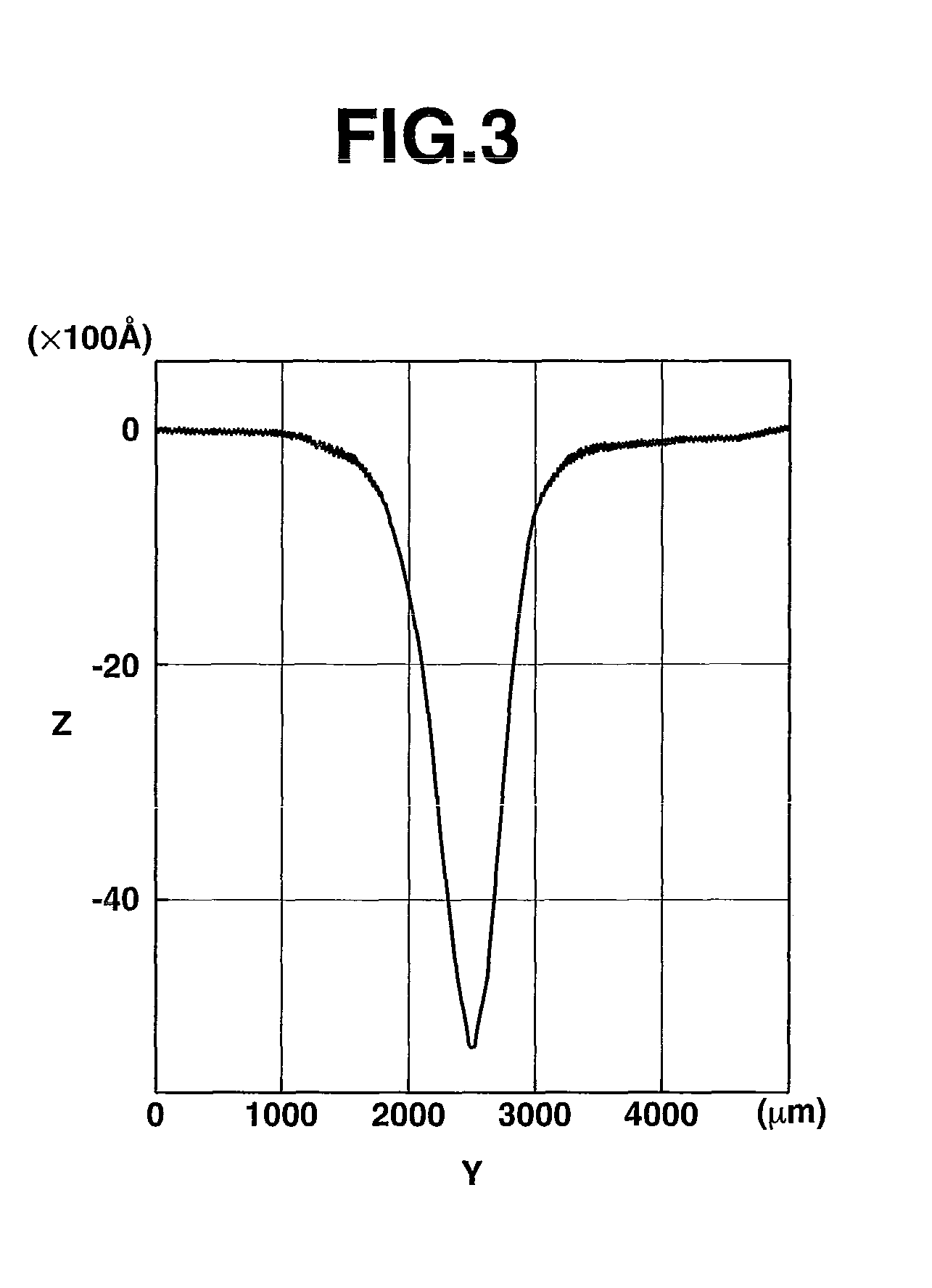Method of processing synthetic quartz glass substrate for semiconductor
a technology of synthetic quartz glass and substrate, which is applied in the direction of grinding heads, manufacturing tools, lapping machines, etc., can solve the problems of inability to form recipes for flatness improvement, and inability to form fine patterns, etc., to achieve excellent flatness and improve flatness
- Summary
- Abstract
- Description
- Claims
- Application Information
AI Technical Summary
Benefits of technology
Problems solved by technology
Method used
Image
Examples
example 1
[0070]A sliced silica synthetic quartz glass substrate raw material (6 in) was subjected to lapping by use of a double side lapping machine designed for sun-and-planet motion, and was subjected to rough polishing by use of a double side polishing machine designed for sun-and-planet motion, to prepare a raw material substrate. In this instance, the surface flatness of the raw material substrate was 0.314 μm. Incidentally, measurement of flatness was conducted by use of a flatness measuring system Ultra Flat M200, produced by Tropel Corp. Then, the glass substrate was mounted on a substrate holder of an apparatus shown in FIG. 9. In this case, the apparatus had a structure in which a processing tool 2 is attached to a motor and can be rotated, and a pressure can be pneumatically applied to the processing tool 2. In FIG. 9, numeral 7 denotes a pressing precision cylinder, and numeral 8 denotes a pressure controlling regulator. As the motor, a small-sized grinder (produced by Nihon Seim...
example 2
[0078]A sliced silica synthetic quartz glass substrate raw material (6 in) was subjected to lapping by use of a double side lapping machine designed for sun-and-planet motion, and was subjected to rough polishing by use of a double side polishing machine designed for sun-and-planet motion, to prepare a raw material substrate. In this instance, the surface flatness of the raw material substrate was 0.328 μm. Then, the glass substrate was mounted on the substrate holder of the apparatus shown in FIG. 9. As the processing tool, one in which a polishing part having an exclusive-use felt disc (A4021, produced by Nihon Seimitsu Kikai Kosaku Co., Ltd.; hardness: A65) adhered to a 20 mmφ soft rubber pad (A3020, produced by Nihon Seimitsu Kikai Kosaku Co., Ltd.) was used. The tool has a mechanism in which it is perpendicularly pressed against the substrate surface, the contact area being 314 mm2.
[0079]Next, the processing tool was moved on the work under a rotational speed of 4,000 rpm and a...
example 3
[0081]A sliced silica synthetic quartz glass substrate raw material (6 in) was subjected to lapping by use of a double side lapping machine designed for sun-and-planet motion, and was subjected to rough polishing by use of a double side polishing machine designed for sun-and-planet motion, to prepare a raw material substrate. In this instance, the surface flatness of the raw material substrate was 0.350 μm. Then, the glass substrate was mounted on the substrate holder of the apparatus shown in FIG. 9. As the processing tool, one in which a polishing part having an exclusive-use felt disc (A4011, produced by Nihon Seimitsu Kikai Kosaku Co., Ltd.; hardness: A65) adhered to a 10 mmφ soft rubber pad (A3010, produced by Nihon Seimitsu Kikai Kosaku Co., Ltd.) was used. The tool has a mechanism in which it is perpendicularly pressed against the substrate surface, the contact area being 78.5 mm2.
[0082]Next, the processing tool was moved on the work under a rotational speed of 4,000 rpm and ...
PUM
| Property | Measurement | Unit |
|---|---|---|
| area | aaaaa | aaaaa |
| angle | aaaaa | aaaaa |
| flatness F2 | aaaaa | aaaaa |
Abstract
Description
Claims
Application Information
 Login to View More
Login to View More - R&D
- Intellectual Property
- Life Sciences
- Materials
- Tech Scout
- Unparalleled Data Quality
- Higher Quality Content
- 60% Fewer Hallucinations
Browse by: Latest US Patents, China's latest patents, Technical Efficacy Thesaurus, Application Domain, Technology Topic, Popular Technical Reports.
© 2025 PatSnap. All rights reserved.Legal|Privacy policy|Modern Slavery Act Transparency Statement|Sitemap|About US| Contact US: help@patsnap.com



